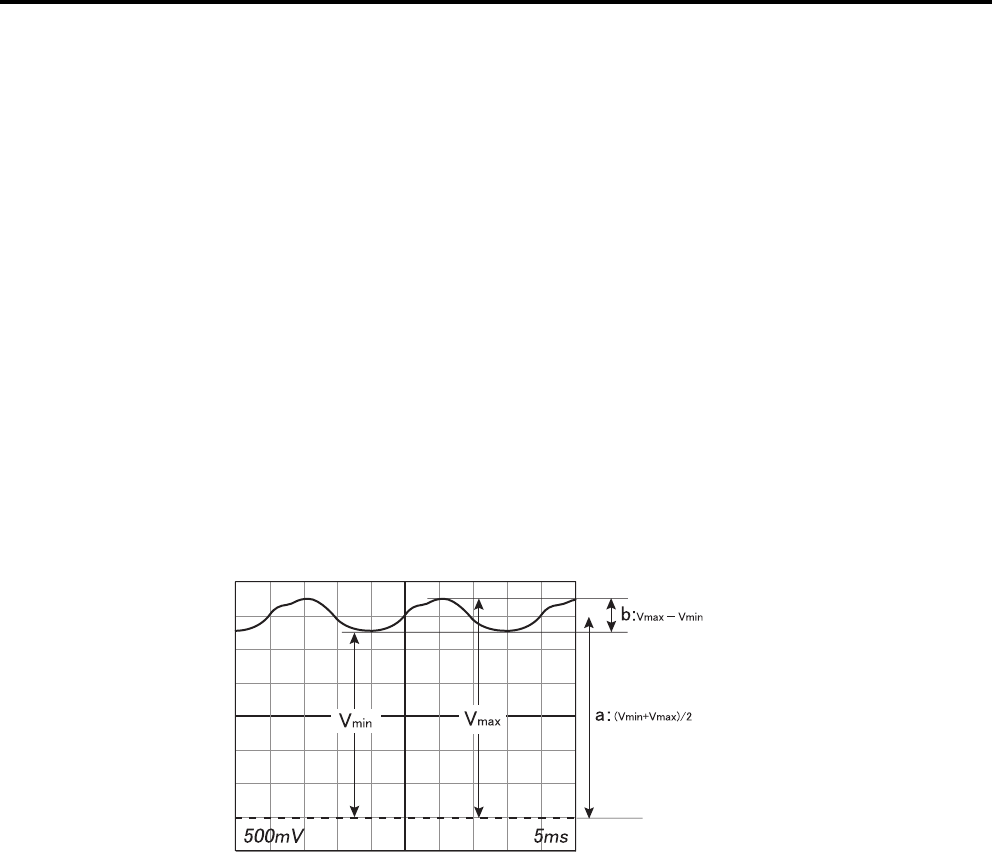
96
6. Principle of Flicker Mode
<What is Flicker?>
“Blinking“ that appears on the display under certain conditions is called flicker.
This symptom occurs when settings like refresh rate and resolution do not match those set on the display, and in the
case of LCD, it may also occur depending on the displayed colors.
Since flicker occurs periodically, it has an adverse effect on the user’s eyes.
The relationship between the time axis (horizontal) and intensity level (vertical axis) is shown in Fig. 1.
From this, it is obvious that the intensity level changes periodically and the larger its amplitude the more clearly the
flicker is recognized.
In addition, it is known that the frequency of intensity level change is twice as large as that of the display’s vertical
synchronizing signal.
<Flicker Measurement Method>
Two kinds of quantifying measurement methods are available: contrast method and JEITA method.
With the CA-310 with LED Flicker Measuring ø27 Probe(CA-P32/35) or LED Flicker Measuring ø10 Probe(CA-PS32/
35) alone, the contrast method is possible. Use of the software supplied with the instrument also allows JEITA
method. This section gives an outline of both quantifying measurement methods.
(1)Contrast Method
If the intensity level of the display changes as Fig. 1, it is considered that AC component (b) overlaps on the DC
component (a). With the contrast method, the ratio of AC component to DC component is defined as the flicker
amount.
AC component (a) is defined as Vmax – Vmin and DC component (b) as (Vmax + Vmin)/2, and the flicker amount
is calculated by the following formula.
Flicker amount = AC component / DC component
= (Vmax – Vmin)/{(Vmax + Vmin)/2} ×100 [%]
Fig. 1


















